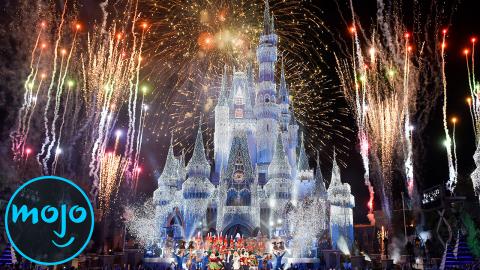Top 5 Things You Didn't Know About Fireworks

You've seen them countless times, but how much do you really know about them? From their origin story, to their dangers, to their biggest consumer, here are some fun facts about everyone's favorite explosions! WatchMojo counts down the Top 5 Things You Didn't Know About Fireworks.
Special thanks to our user mac121mr0 for suggesting this idea! Check out the voting page at WatchMojo.comsuggest/Top+5+Explosive+Facts+About+Fireworks.
#5: China Invented Them, but Italy Arguably Perfected Them
While it’s widely accepted that the Chinese invented fireworks, not nearly as many people are aware that it was the Italians who turned them into the colorful projectiles we know today. Italian pyro-technicians developed the first aerial shells, aka the ice cream cone shaped tubes that are used to shoot a fireworks display into the sky. They were also the first to add chemicals to the shells in order to produce colorful nighttime explosions. Fun fact: blue is the hardest color to produce as the extreme temperatures required to project a firework can often wash out its, well... blueness.
#4: Shaping Fireworks Requires Careful Planning
In this modern age of technological wonders, fireworks might not inspire awe and wonder quite like they used to. But if more people knew how difficult it is to produce complex patterns using only fuel, pellets and occasionally, pieces of paper, this artform would surely get a whole lot more respect. Arranging chemical filled pellets and fuel in different ways inside of the aforementioned aerial shell is what creates those beautiful patterns in the sky. Mix the pellets and fuel together and you’ll get streaks; surround the fuel with a ring of pellets and you’ll get a circle. It’s a fine art that requires calculation and a skilled hand.
#3: Fireworks Are Actually Poisonous
For all the wonder they inspire, fireworks aren’t without their drawbacks. Foremost among them is the fact that their ingredients pose serious health effects to both human beings and the environment. You see, when they explode, fireworks release a combination of heavy metals and dioxins into the sky and surrounding area. Keep in mind that many firework displays take place on or near bodies of water. The ensuing chemical fallout is hazardous to both terrestrial and aquatic ecosystems - not to mention humans -when consumed in high doses. But it’s not all bad! The U.S. army is developing environmentally friendly flares, the technology behind which will hopefully be applied to fireworks in the future!
#2: The Walt Disney Company is the Biggest Consumer
When you think about it, it makes total sense. The Walt Disney Company owns resorts in California, Florida, Tokyo, Paris, Hong Kong and Shanghai and all of them put on daily firework shows. Suffice it to say that this requires an inordinate amount of fireworks to be on hand 24/7, 365. As such, the Walt Disney Company is the world’s largest consumer of fireworks by a long shot. The company is also one of the largest consumers of explosive devices in the world, second only to the U.S. Department of Defense! So you’d be wise to avoid picking a fight with Mickey on your next vacation.
#1: Fireworks Are Actually Designed NOT to Explode
Fireworks are only as good as the anticipation of their inevitable explosion. As such, they are designed to burn slowly. This ensures that when they do explode, they produce a maximum visual effect and cover the greatest amount of sky possible. Achieving this feat isn’t easy, as chemists must mix just the right amount of fuel and oxidizer chemicals together, avoiding oversaturation to ensure that they don’t burn too quickly. The last thing anyone would want to see on New Year’s Eve is a batch of fireworks exploding 10 feet off the ground!